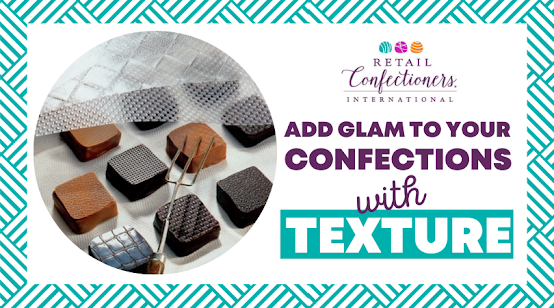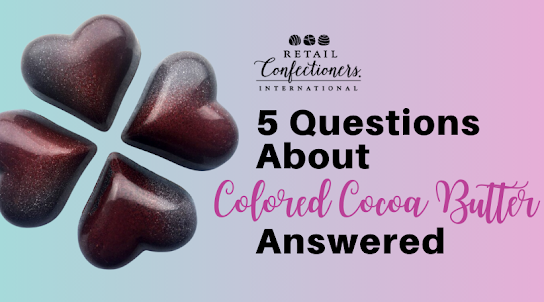Upgrade your confections with a cool, glimmering hologram. For this week’s blog post, Cargill Cocoa & Chocolate shares a simple technique that gives chocolate a dazzling, rainbow effect without the use of colored cocoa butter or pigments.
How does it work?
A diffraction sheet is made of plastic which consists of micro-etchings, which are tiny grooves that causes white light to disperse into a rainbow of colors. When liquid chocolate meets a diffraction sheet, the chocolate takes on the sheet’s micro etchings as it solidifies. These etchings in the chocolate replicate the dispersion effect of the sheet and separate white light into individual colors, which gives the lovely rainbow effect. When selecting a diffraction sheet (also known as a gradient sheet), the greater the number of lines, the more of an opportunity for the light to diffract and give a stronger iridescent look. Diffraction sheets can be found from a number of online retailers, such as Amazon.
How to do it?
There are a few ways to make this dazzling design.
The first, is using a magnetic transfer mould. Place the diffraction sheet into your transfer mould, similar to how you would use cocoa butter transfer sheets or other traditional design applications. Once placed, proceed to pour tempered chocolate into your mould. Be sure to knock the air out of the mould to ensure a seamless transfer of the design. When the chocolate cools, the liquid will mould around the micro etchings allowing the rainbow shimmer to be present on your chocolate.
Another method is to apply chocolate directly to the diffraction sheet. The easiest way to utilize the sheets directly is to slightly melt the top of an already moulded or enrobed product, place the melted side onto the diffraction sheet and let it cool. This way you can design items that have already been completed, like chocolate chip bottoms or chocolate enrobed cookies. Chocolate can also be poured directly onto the gradient sheet. When slightly cooled, the diffraction sheet can be bent or curled to add a shimmer to chocolate curls or tubes.
As discussed above, you aren’t transferring the design but instead, transferring the grooves into the chocolate. Because of this, the sheets can be used multiple times. As long as the micro etchings are clear, the design can continue to be moulded onto the product. Gently wash the sheet with soap and water after use. Make sure that the sheet is completely dry before the next use. A dry wipe down can also be completed between batches.
How can it be applied?
There are an endless number of ways to apply this shimmering design. Moulded truffles, chocolate curls, and enrobed treats can be elevated with holographic effects. The possibilities are only limited to your glittering imagination!
Crave more?Click here
to subscribe and start receiving weekly tips, like this, delivered straight to your email inbox. RCI's blog is just one of the many resources we offer to help candy makers refine their craft and build upon their business and marketing practices.
Follow us on Facebook
for even more sweet inspiration.
Not a member? Click here to learn how RCI can help you build your sweet business
.











